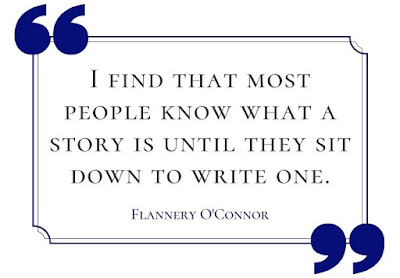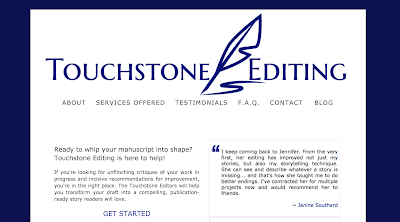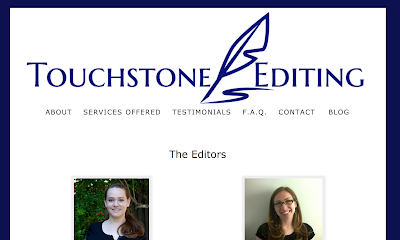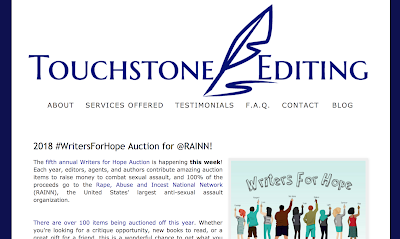Last time we talked about the differences between a short story, a flash fiction, and a microfiction. To recap, microfictions are a subset of flash fiction, which is itself a subset of short stories. But why would you want to write a tiny story in the first place?
From the reader’s perspective, we tend to have short attention spans nowadays. Some days we love to sink into a novel, but other times we just want something quick and bite-sized to digest. Maybe your reader is in the middle of ten other projects and doesn’t have the mental energy to devote to a longer story, or maybe they have three kids and only five-minute snatches of time to read. Whatever the reason, tiny, bite-sized stories fit that need.
From the writer’s perspective, writing flash fiction can help you sharpen your prose. To tell the same story in 500 words that you just told in 2,000 words, you’re going to have to make sure every word is that much more carefully chosen. Instead of describing the sky as “a pale blue flecked with green like a Caribbean sea when the light catches it,” maybe you’ll simply use the word “turquoise.” You’ll have to figure out which parts of your story can be condensed and what can be figured out from context rather than being explicitly stated. Maybe that entire subplot with the twin sister isn’t necessary; maybe we don’t need to see the scene where the character is at the hospital, and this can just be mentioned in passing. In short, it’s a good exercise in learning to be intentional with each word you put down.
I don’t mean to imply that with longer fiction you should use that extra space to convey superfluous information. The truth is, you want to choose each word with care in any piece of writing, regardless of length or genre. Maybe that subplot with the twin sister is absolutely vital to the plot, or maybe it tells us something about our main character that we wouldn’t know otherwise. My point here is that the brevity of flash fiction can be helpful in forcing yourself to be more deliberate with your prose.
That’s
why someone might want to write flash fiction. The
how of writing it is a little harder to quantify.
Many of the same things that apply to writing longer fiction will still apply. You’ve probably heard the oft-repeated edict: “Show, don’t tell.” One common mistake is thinking that in flash fiction you have to resort to telling in order to summarize large chunks of story that you aren’t able to show. But with a story of any length, showing rather than telling is still good advice. Similarly, you’ll still want to make sure you have good characterization, conflict, setting, etc. And like I mentioned last time, flash fiction stories still need to be
complete, with their own story arcs of a beginning, middle, and ending.
Another common mistake is “running out” of words and rushing the ending. A helpful tip here is to write the story out as long as it wants to be, and then figure out how to make it fit within the 1,000-word limit once you’re revising. Especially for writers new to the shorter form, trying to write a story that will hit a certain word limit in the first draft can feel impossible.
It may be helpful to keep in mind that flash fiction always starts
in media res, or in the middle of the conflict. This is common in most popular fiction nowadays, but until the past couple decades, it was typical for novels to start with a slower buildup, describing the scenery or the time period before centering on the main character(s). Even nowadays, some genres and writing styles still prefer this kind of measured, gradual opening. But in a shorter piece, we don’t have time to describe the countryside, then the farm where our characters work, then the field they’re standing in, before coming to rest on the characters themselves. We don’t have the space to describe the years of animosity between our characters, or the way Character A has always been jealous of Character B. Instead, our story is going to start the moment Character A flings a clod of dirt at Character B, and we’re going to have to figure out our characters’ long, complicated history together through the ensuing action or dialogue, while at the same time seeing how they handle this new conflict.
Another important thing with flash fiction, particularly microfiction, is that you need to hook your reader even more quickly. In a longer story, you have a little more leeway to build up to what’s interesting. (With the caveat that, in any story of any length, if your opening doesn’t intrigue your reader, they’re going to stop reading.) But in a tiny story, since each word carries more weight, your initial hook is even more critical. It’s also a bit more complicated, since the opening line has to not only hook the reader, but also still function as a necessary part of the overarching story because of your limited number of words.
It can be hard for novel writers to rein in their words and focus on brevity, but it’s a worthwhile challenge that can help you sharpen your prose. But be forewarned: flash fiction can be addictive! Some writers like the challenge so much, they get hooked on writing flash fiction and never go back.
So what do you think? Flash fiction: love it or hate it? Let me know in the comments!












